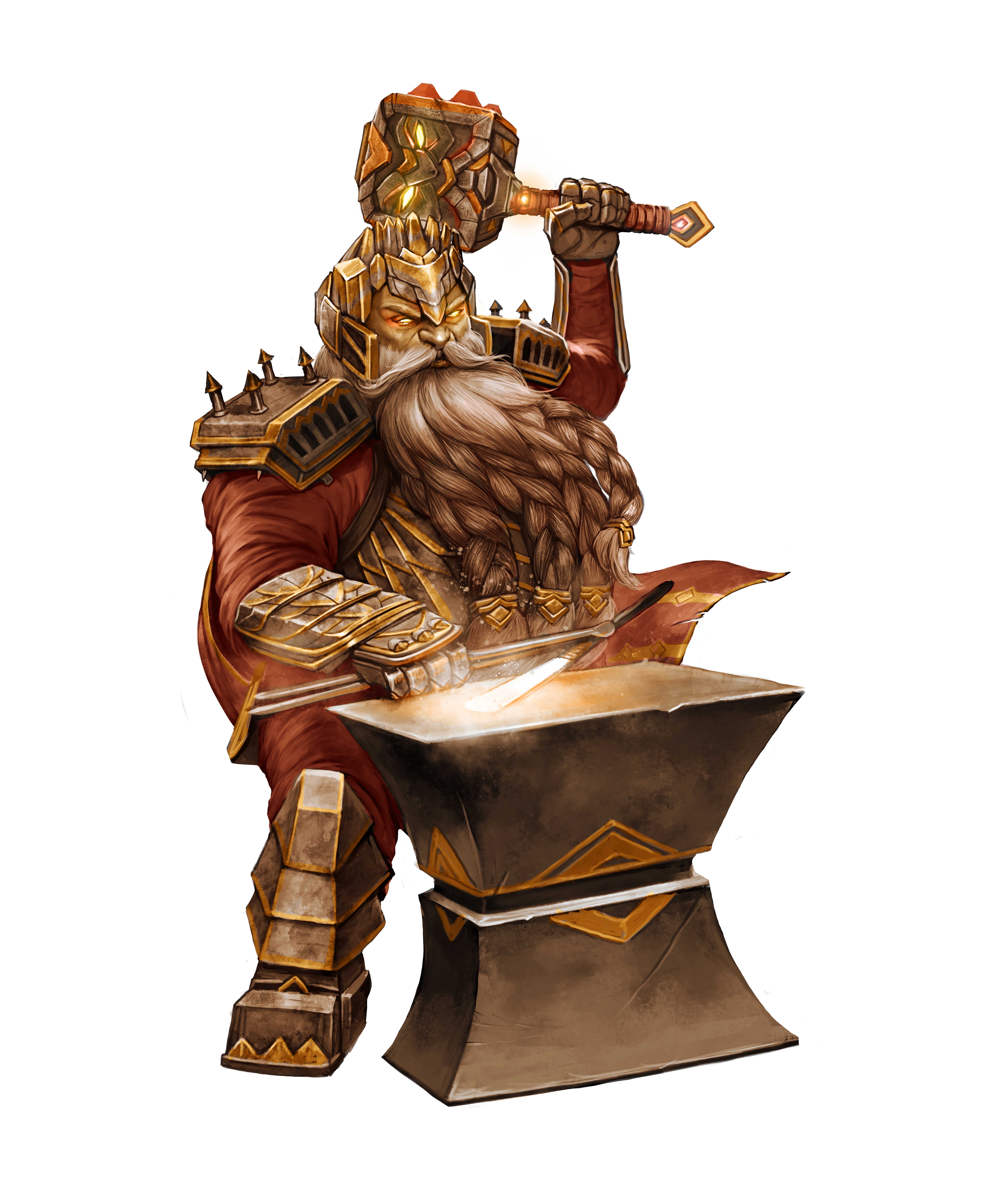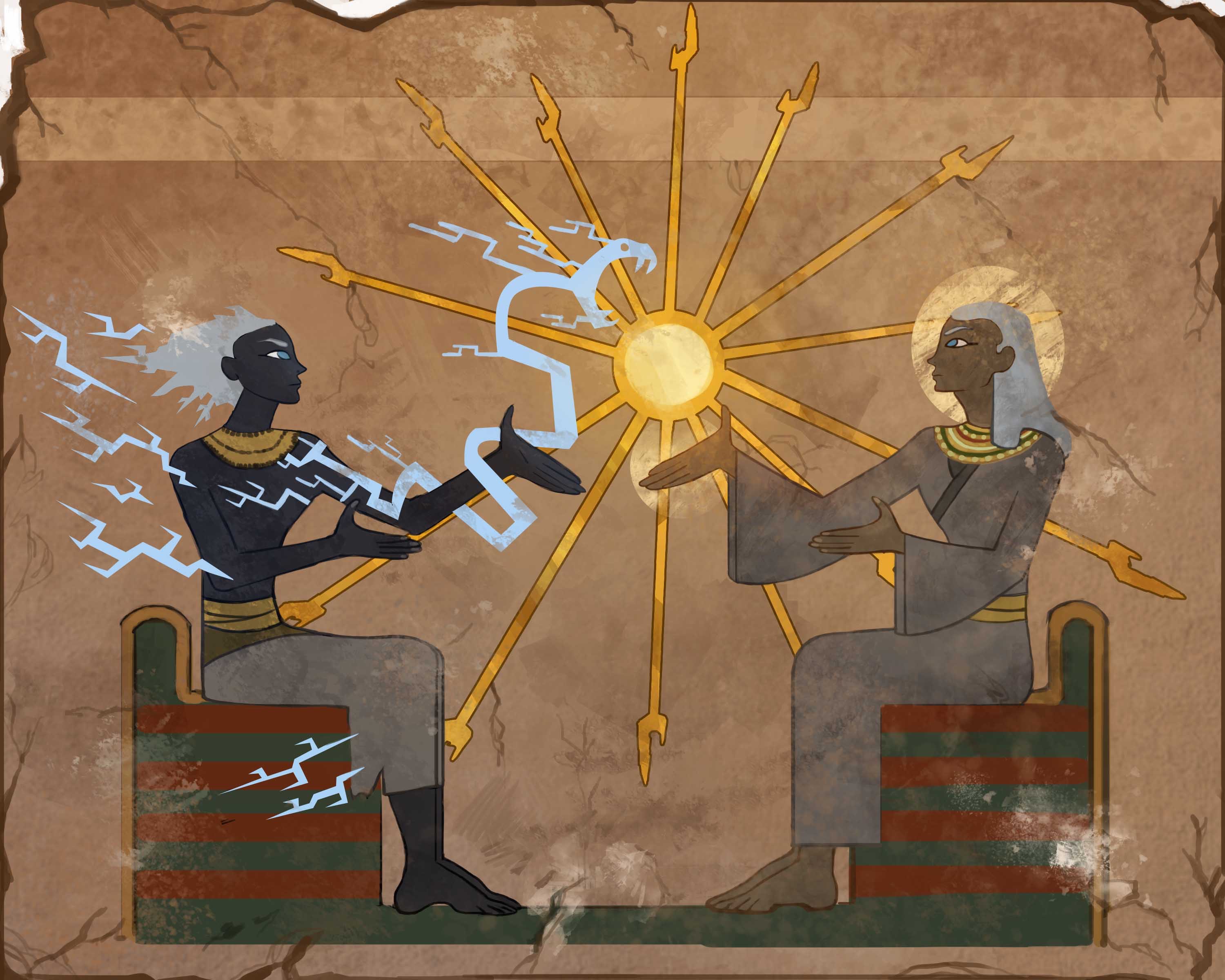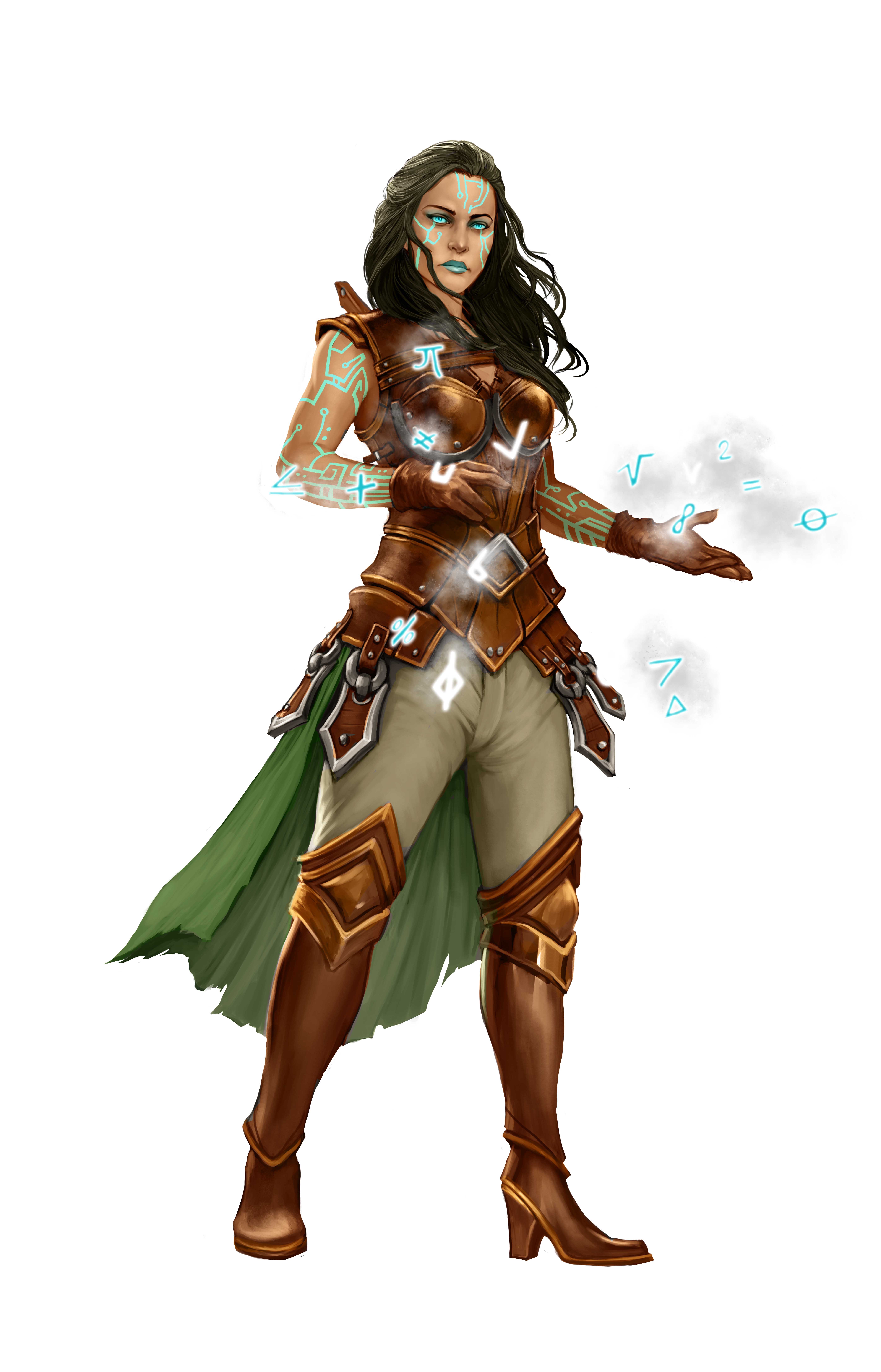The people of Golarion have literally hundreds of gods that they could choose to follow. In fact, many people follow the teaching of multiple deities in their everyday life. A farmer might pray to Gozreh for rain, Sarenrae for lots of sunlight, and Erastil for a good harvest all in the same day. Considering this was a common aspect of so many of our characters and stories in Pathfinder, we thought that Lost Omens Gods & Magic was the perfect time to introduce a way to represent polytheism mechanically.
Pantheons are groups of related gods that can be worshipped either individually or together. In some cases, these gods share thematic ties. The farmer mentioned above sees Erastil, Gozreh, and Sarenrae as important because of their influence on the farmer’s crops. In other cases, gods are all part of the same pantheon due to their common worshippers. Most elves worship the same group of elven deities, for example. Sometimes gods might be actually related, such is the case with Torag and his family who make up the dwarven pantheon.
Gods & Magic introduces new rules for worshipping pantheons. A character can choose to worship a pantheon, which is very similar to the worship of an individual deity. A pantheon features a stat block with its own set of alignment restrictions, domains, edicts, anathemas, and so on, thus following the same rules as the worship of a single deity. Pantheons do have a wrinkle, however. Instead of simply worshipping the pantheon, a character must also select a patron deity among those that are part of the pantheon. Think of the patron deity as a character’s focus or guide to the specific pantheon. A character worshipping a pantheon must follow the edicts and avoid the anathemas of both the pantheon and patron deity, with the patron’s edicts and anathema taking precedence. Having a patron deity prevents a worshipper from becoming caught between mutually exclusive edicts and anathema from all the gods they worship as the worshipper can ultimately fall back on the patron’s requirements in conflicting or unusual situations.
Dwarf Pantheon
- Alignment LG (LN, NG, N)
- Areas of Concern Ancestry, crafting, dwarves, relationships
- Divine Font heal
- Divine Ability Constitution or Wisdom
- Divine Skill Diplomacy
- Domains creation, family, protection, wealth
- Alternate Domains duty, glyph
- Cleric Spells 1st: ant haul, 4th: creation, 7th: retrocognition
- Edicts develop skills useful to your community (especially mining, crafting, and trading), honor your ancestors through traditions and rituals
- Anathema dishonor your family, willingly break a contract or oath, irreparably damage an ancestral relic
- Favored Weapon warhammer
This book presents a few sample pantheons, such as the dwarven pantheon and the Godclaw. However, pantheons can come in all shapes and sizes. We recommend that GMs use the pantheons featured in the book as a starting point for what you can do with pantheons. In fact, let’s see what we might be able to come up with using some of the gods featured in Gods & Magic!
You could consider gods who are each other’s’ allies. Desna, Shelyn, and Sarenrae all work together in their fight against evil and are even known to be lovers. If we made a pantheon that included their themes and values, we might end up with something like this.
The Prismatic Ray
- Alignment NG (LG, NG, CG)
- Areas of Concern Defeating evil, guarding innocents, and wholesome creations
- Divine Font heal
- Divine Ability Wisdom or Charisma
- Divine Skill Diplomacy
- Domains creation, moon, protection, sun
- Alternate Domains family, healing, travel
- Cleric Spells 1st: sleep, 3rd: fireball, 4th: creation
- Edicts Create works that inspire good acts, defend those who cannot defend themselves, pursue evil
- Anathema allow evil to spread, destroy that which brings joy to others, fail to offer evil a chance to surrender
- Favored Weapon shortsword
Here, I tried to snag a bit from each goddess. I settled on the Primastic Ray as a name that represents all three. The various colors represent Shelyn, while the ray could be either moonlight for Desna or sunlight for Sarenrae. Of course, this is just one take on these three deities. I could have chosen to focus more on the travel and freedom aspects of Desna or the healing aspects of Sarenrae. What’s fun about pantheons is that you can usually make them however you like, so long as they make sense thematically.
Speaking of thematic ties, have you heard of Ancient Osirion? Turns out they had lots of deities back in the ancient days. Also, did you know that Nethys was originally an Osiriani pharaoh? That’s fun! Well, let’s see what we can do with that. Gods & Magic includes rules for worshipping the Ancient Osirian gods. A good number of them (Isis, Selket, and Thoth to be specific) also have a focus on magic, just like Nethys. If we take those four, we might get a pantheon like this one.
Wards of the Pharaoh
- Alignment NG (LN, NG, N, CG)
- Areas of Concern Abjuration magic, protection, self-improvement
- Divine Font harm or heal
- Divine Ability Constitution or Intelligence
- Divine Skill Medicine
- Domains Family, knowledge, magic, protection
- Alternate Domains glyph*, healing
- Cleric Spells 1st: soothe, 4th: resilient sphere, 9th: disjunction
- Edicts Use magic to defend yourself and your allies, maintain magical wards, seek greater magical knowledge
- Anathema Destroy wards that are actively protecting innocents, refuse to use your magic to help those in need who ask you
- Favored Weapon staff
All of these deities have a focus on magic, but a lot of them are also focused on the protection of others or on knowledge. I chose to lean into these aspects a bit, creating a pantheon themed around using magic to protect others while still keeping the pursuit of knowledge. Nethys is a neutral deity, but I doubt that he would be against improving one’s magical skill regardless of what school of magic it’s for. As a result, he made a fitting, but very interesting addition to the pantheon.
Let’s try one more pantheon before I go. With the focus on knowledge, I want to snag a few knowledge focused deities and see what we can create. I start by grabbing Brigh and Casandalee. Then, I take Irori as he is an obvious choice. From there, I include Shyka who can understand all events throughout time thanks to their unique focus on time. Finally, to introduce a little chaos, I’ve added Ydajisk, a protean demigod focused on language. With all of those deities, we might get something like this.
Pillars of Knowledge
- Alignment N (LN, N, CN)
- Areas of Concern Learning, innovation, safeguarding knowledge
- Divine Font harm or heal
- Divine Ability Intelligence or Wisdom
- Divine Skill Crafting
- Domains Creation, knowledge, secrecy, truth
- Alternate Domains glyph*, perfection, time*
- Cleric Spells 1st: message rune*, , 3rd: hypercognition, 9th: retrocognition
- Edicts Seek new knowledge, use your knowledge and skill to improve the world around you, protect knowledge from becoming lost
- Anathema Choose to use old knowledge or tools after they have been improved upon, destroy knowledge, refuse to answer a query for which you know the answer
- Favored Weapon light hammer
Again, this leads to a fun little mishmash of different themes and ideas for each of the deities. Some of the most fun comes with creating anathemas for the pantheons. Brigh and Casandalee are both goddesses related to invention and innovation, so asking a worshipper to make sure they are using the latest knowledge and tools is an interesting way to express these themes. Ydajisk calls for worshippers to keep old languages—and old knowledge—alive, but they also keep you from holding your tongue when asked a question.
As you can see, pantheons can make for limitless interesting combinations and ideas. We’re looking forward to providing more pantheons in the future, but we’re most excited to see what pantheons players and GMs create for their own games. You could maybe take the four Horsemen and create a pantheon to worship all four. If you like the spirit of competition, you could create a pantheon that includes Kurgess and other sporting deities. I’m sure our fans will create lots of fun and memorable pantheons in the years to come. If you want to check out pantheons, make sure to snag Lost Omens Gods & Magic when it releases on January 29th. It’s going to be divine!
Luis Loza
Developer
Friends In High Places
Tuesday, January 21, 2020




